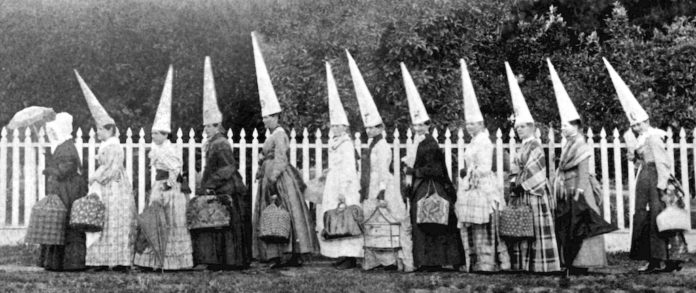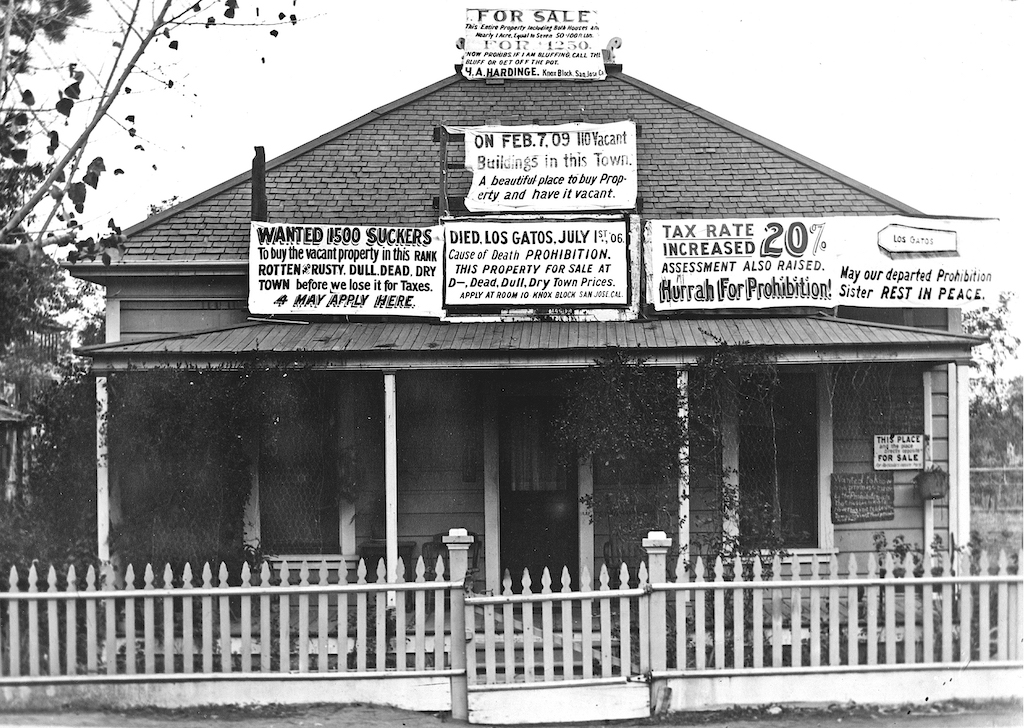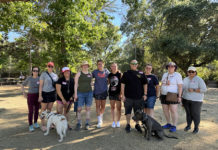
Happy New Year, Los Gatos!
After overindulging during the holidays, many people begin the new year by observing a “Dry January.” The practice of abstaining from alcohol for a month started in the U.K. in 2012 as part of a campaign by Alcohol Concern, a British nonprofit dedicated to raising awareness about alcohol abuse, and spread to the U.S. soon afterward.
It’s hard to imagine today, but during the mid-19th century men consumed as much as seven gallons of hard liquor annually—about three times as much as today. Incessant drunkenness was becoming a public disgrace. Temperance societies such as the Anti-Saloon League and the Woman’s Christian Temperance Union (WCTU) were formed to advocate for a ban on drinking. The issue was closely related to the emerging women’s movement, with the WCTU crusading for prohibition as a way to protect women from abuse by alcoholic husbands.
California was a major target of these prohibitionists. After the rough-and-tumble Gold Rush Era of booze, brothels and barroom brawls, when saloons were plentiful and mostly unregulated, the newly admitted state was in the midst of transforming itself into a haven for young families seeking opportunity in a new land. Locally, the ladies of Saratoga (then called McCartysville) opened one of the first chapters of the WCTU when they were horrified by the number of drunken lumbermen staggering through the streets after frequenting the numerous saloons in town. Los Gatos was not far behind, as incessant drinking during the early Western frontier days became unacceptable to the wives and mothers who were busy creating a stable family oriented community.

In the late 1880s, the tug-of-war between saloon keepers and their supporters (the “wets”) and prohibitionists (the “drys”) shifted into high gear. Given the sizable financial interests and considerable tax revenue involved in the production and sale of alcoholic beverages, it was an uphill battle for the temperance movement.
Yet the prohibitionists prevailed. On June 3, 1889 an ordinance was passed making it unlawful to serve alcohol. For the first time in its young history, Los Gatos had become a completely “dry” town.
However, the issue was far from being settled. In July, a petition was filed to repeal the ordinance, claiming that it was bad for business. Another ordinance, favored by Trustee John Lyndon, was passed in August allowing saloons but imposing high license fees. The debate raged on for nearly 20 years and was arguably the most hotly contested political issue of the day.
The Trustees ultimately decided to take the issue to the voters in the election of 1906. Passions during the campaign ran high on both sides. The new wave of Irish and German immigrants wanted their beer, the French and Italians (especially vintners such as Mirassou and Masson) favored wine, and old-timers clamored for whiskey. Clergymen delivered fiery sermons about the evils of drink.
The 1906 election was close with 54% of the vote favoring prohibition. Los Gatos thus became the second town in California (after Palo Alto) to go dry by popular vote. This was a surprising outcome, since women—the most ardent supporters of prohibition—did not yet have the right to vote. But innkeepers would still not relent and were granted permission to serve alcohol with meals in 1910.
The lengthy dispute was ultimately decided on a national level with the passage of the 18th Amendment, and the entire country went dry at midnight on Jan. 17, 1920.
Alan Feinberg is a Los Gatos historian and founder of the LOST Gatos Project. Its mission is to reignite passion among Los Gatos residents for preserving our town’s unique character and historic treasures before they’re lost forever.










The beautiful part about history